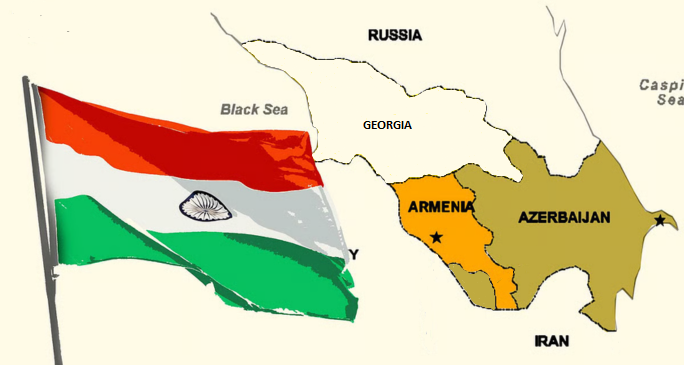India’s Armenia strategy backfires as Azerbaijan deepens ties with China and Pakistan

The South Caucasus is no longer a peripheral zone between Europe and Russia. It is rapidly transforming into a geopolitical hub, shaped by shifting global power dynamics and the rise of new actors such as China and India. As global logistics corridors expand and energy routes diversify, the region’s strategic importance grows exponentially. Once a buffer between NATO and Russia, the South Caucasus is now asserting itself as a contributor to global realignment — a trend made unmistakably clear by the war in Ukraine.
India’s increasing involvement in the region, particularly through Armenia, is emblematic of this shift. Over the past several years, and especially since 2020, India has ramped up its military support for Armenia. While Armenian officials and media outlets often attribute this to Russia’s distraction in Ukraine and its inability to fulfil defence obligations, a deeper analysis reveals a more calculated strategy. India is leveraging the geopolitical vacuum to establish its own footprint in the region, not merely as a supplier of arms, but as a rising power seeking influence in Eurasia.
This development is understandably unsettling for regional actors, especially Azerbaijan, which has long suffered from Armenia’s irredentist and expansionist foreign policies. However, where there is the proverbial poison, there is also an antidote. India’s ambitions are counterbalanced by China, its technological rival in Asia and a global power with growing interests in the South Caucasus. Azerbaijan has responded by deepening its ties with China across political, economic, cultural, and now military domains.
Historically, Azerbaijan relied on Pakistan to offset India’s influence. That partnership remains strong, but now China has entered the equation. Until recently, Azerbaijan’s defence cooperation with China was indirect, often mediated through third countries. A prime example is the acquisition of the Polonez multiple launch rocket system, co-produced by Belarus and China, which significantly enhanced Azerbaijan’s artillery capabilities.

The most prominent Chinese-origin platform in Azerbaijan’s arsenal is the JF-17 Block 3 fighter jet — a joint product of China and Pakistan. This aircraft has dramatically boosted Azerbaijan’s air force capabilities, with its Chinese-made avionics and weapon systems, including the PL-15E air-to-air missile, which extended Azerbaijan’s strike range by 40–50 percent. No neighboring country, excluding Russia, currently fields a comparable platform.
Speculation about further Chinese acquisitions intensified when Lieutenant General Namig Islamzade, commander of Azerbaijan’s Air Force, was reported to be evaluating the J-10CE — a fourth-generation Chinese fighter with fifth-generation capabilities. This coincided with Azerbaijan’s broader efforts to modernize its air fleet, sparking rumors that the country might soon procure advanced Chinese aircraft directly. Unfortunately, this speculation has not turned into reality so far.

However, those rumors gained substance when footage emerged from Baku’s streets showing HQ-9BE surface-to-air missile systems — China’s long-range air defense platform — during preparations for the fifth anniversary of Azerbaijan’s 2020 military victory. This marked a turning point: Azerbaijan was no longer acquiring Chinese systems through intermediaries. It was now engaging in direct military procurement from Beijing.
This shift signals more than just a transactional defense relationship. It reflects China’s deeper entry into the South Caucasus and its alignment with Pakistan to counterbalance India’s growing presence via Armenia. For Azerbaijan, this trilateral dynamic — with China and Pakistan on one side, and India-Armenia on the other — offers strategic depth and diversification.
And diversification is key. Prior to 2020, Azerbaijan’s military arsenal was dominated by Russian, Israeli, and Belarusian systems. Post-war procurement has seen a surge in Turkish and Pakistani platforms. The addition of Chinese systems not only enhances Azerbaijan’s capabilities but also reduces dependence on any single supplier, making its defense posture more resilient and adaptive.
Azerbaijan’s pivot toward China and Pakistan is not merely reactive — it is strategic. As India seeks to expand its influence through Armenia, Azerbaijan is building a counterweight rooted in technological sophistication, diplomatic pragmatism, and regional balance. The South Caucasus is no longer a passive stage for great power competition; it is becoming an active player in shaping the future of Eurasian geopolitics. And in this emerging order, Azerbaijan is positioning itself not just as a regional actor, but as a strategic bridge between East and West.
Here we are to serve you with news right now. It does not cost much, but worth your attention.
Choose to support open, independent, quality journalism and subscribe on a monthly basis.
By subscribing to our online newspaper, you can have full digital access to all news, analysis, and much more.
You can also follow AzerNEWS on Twitter @AzerNewsAz or Facebook @AzerNewsNewspaper
Thank you!

